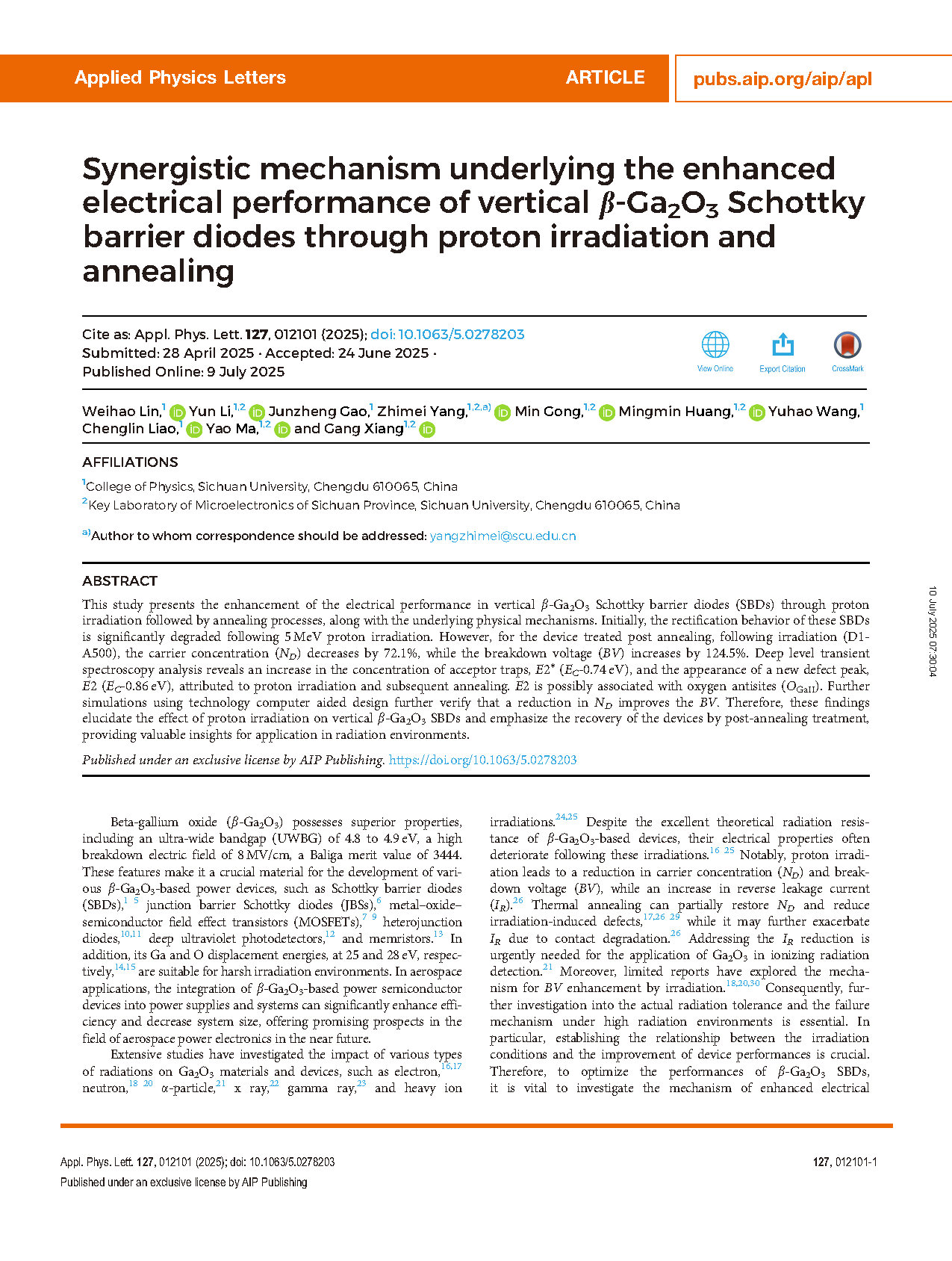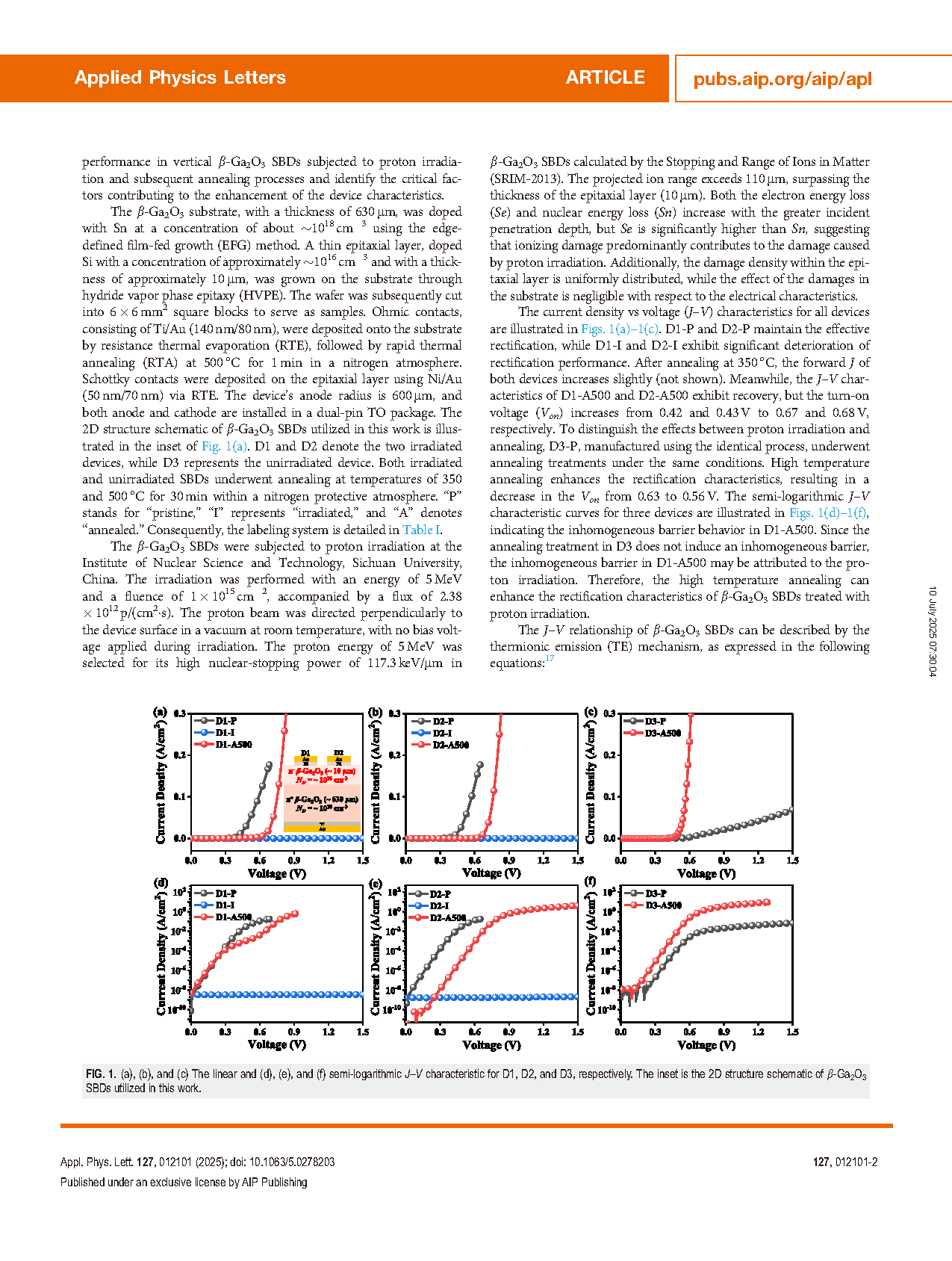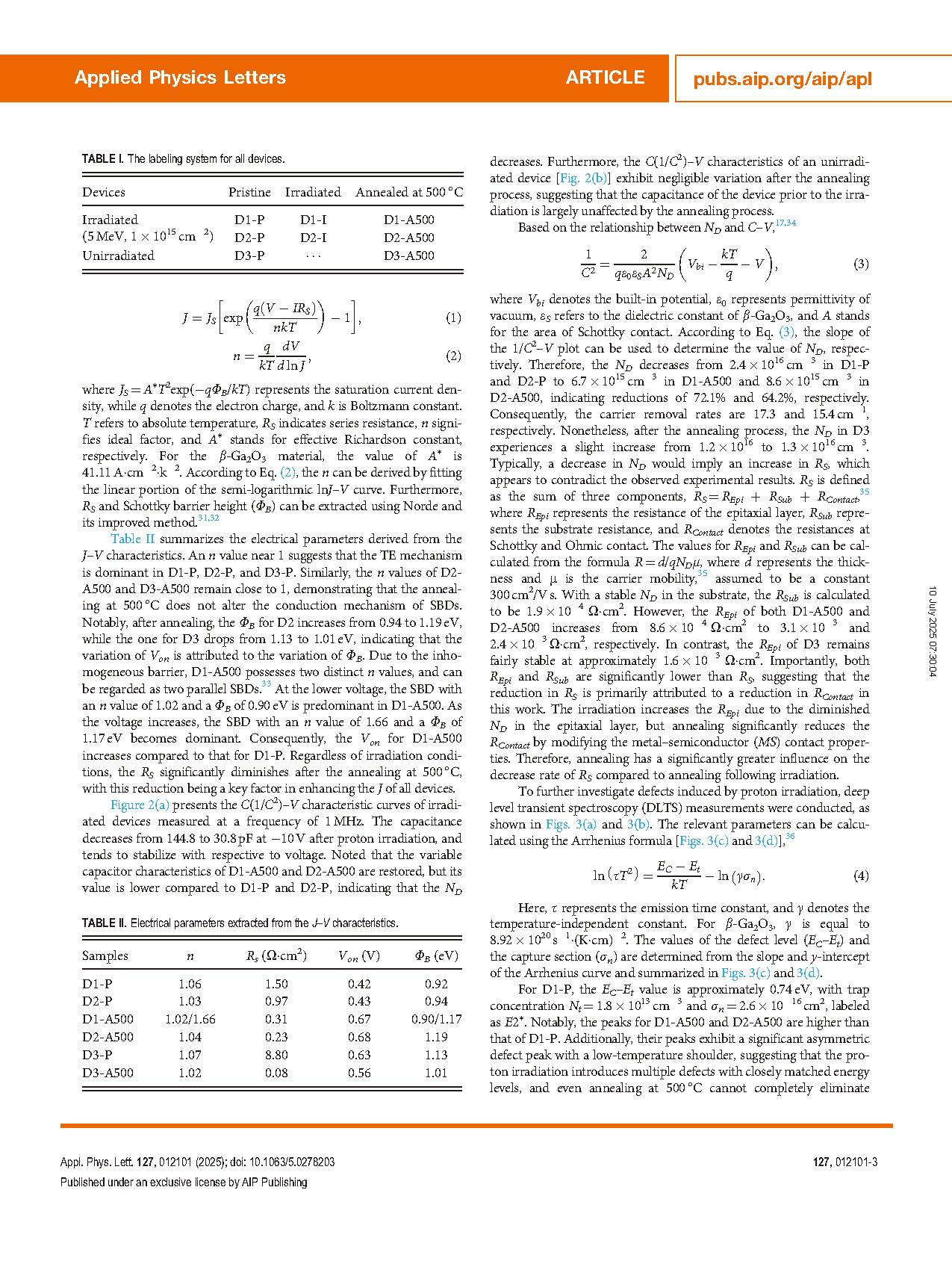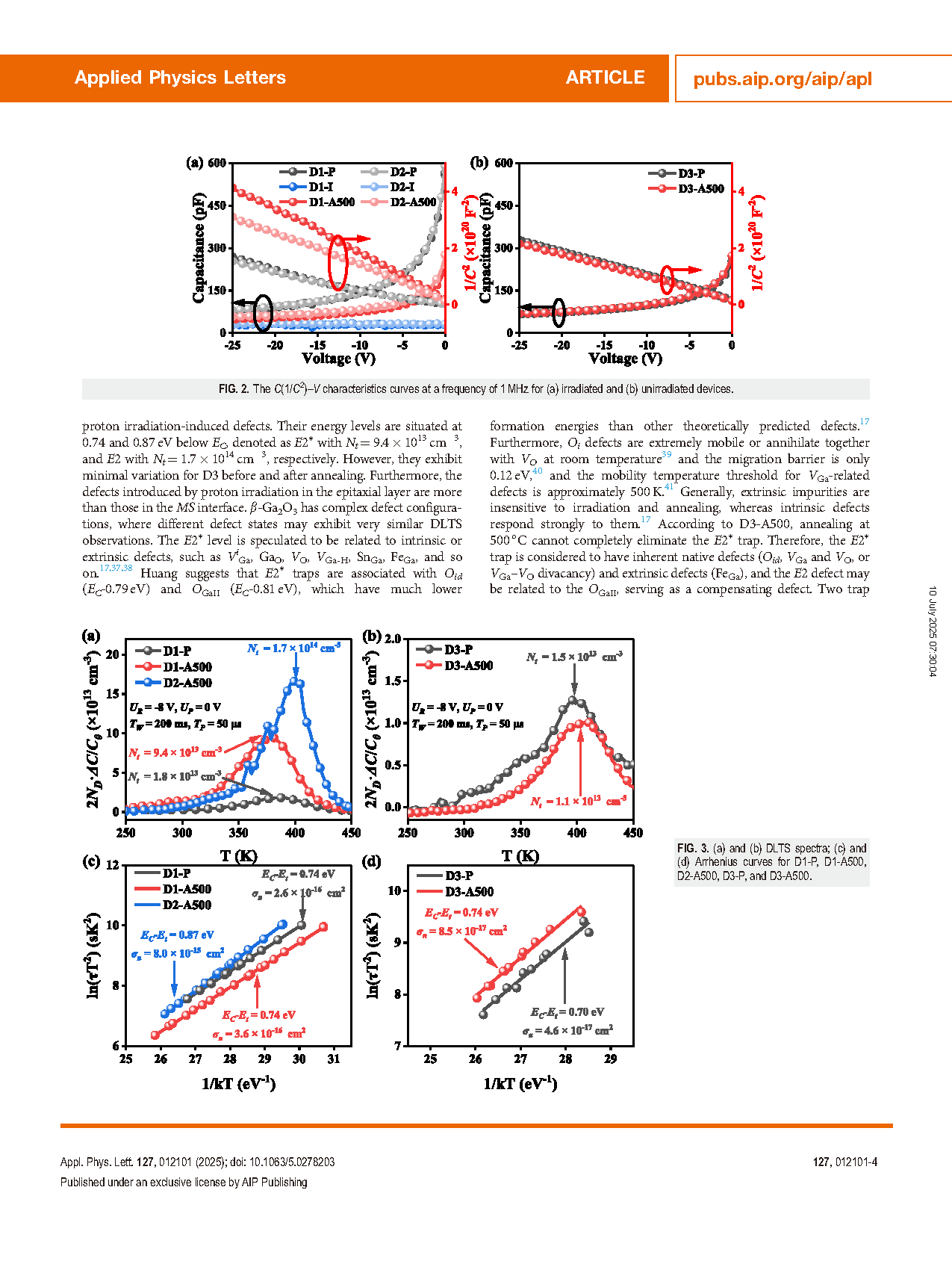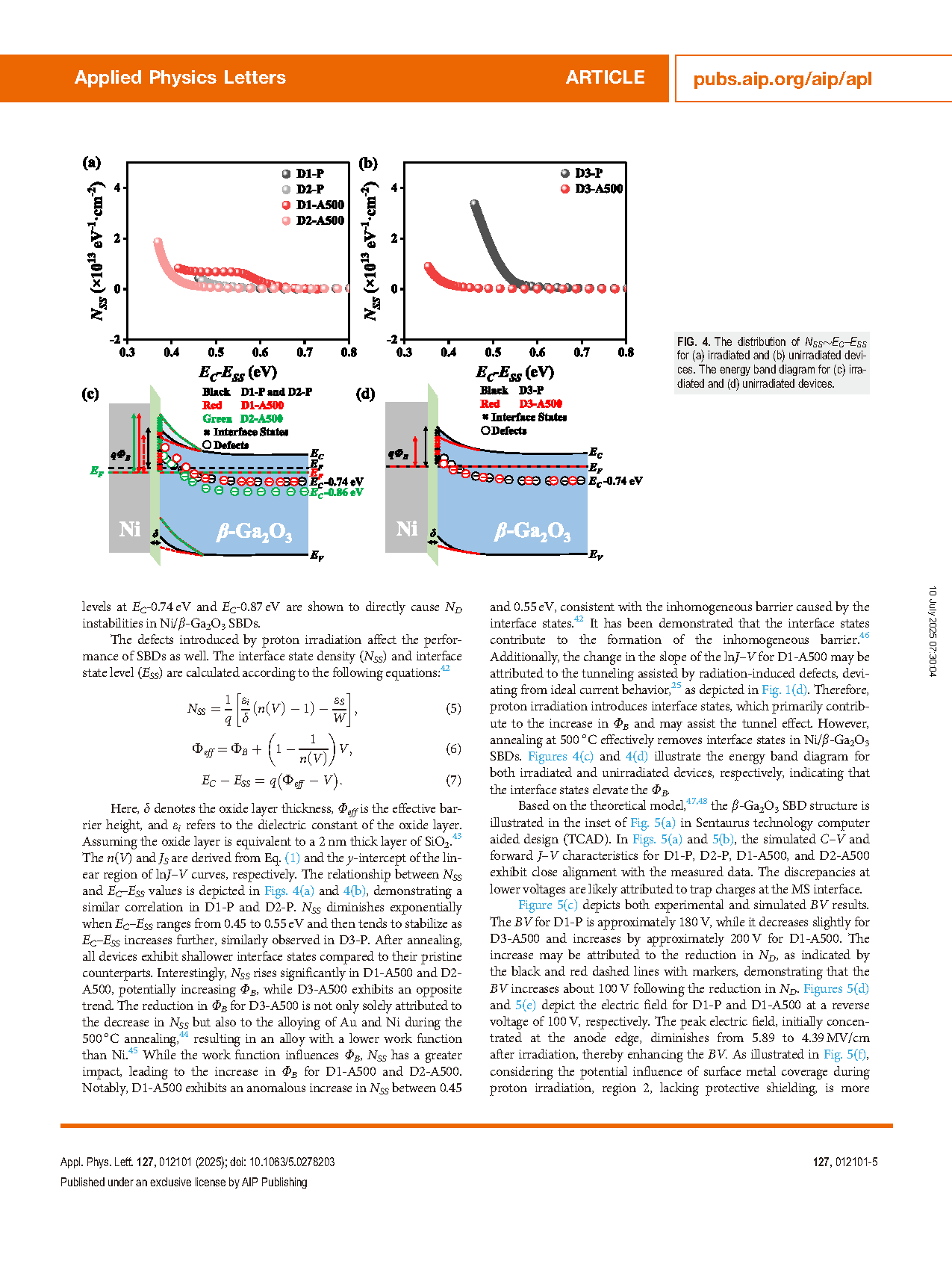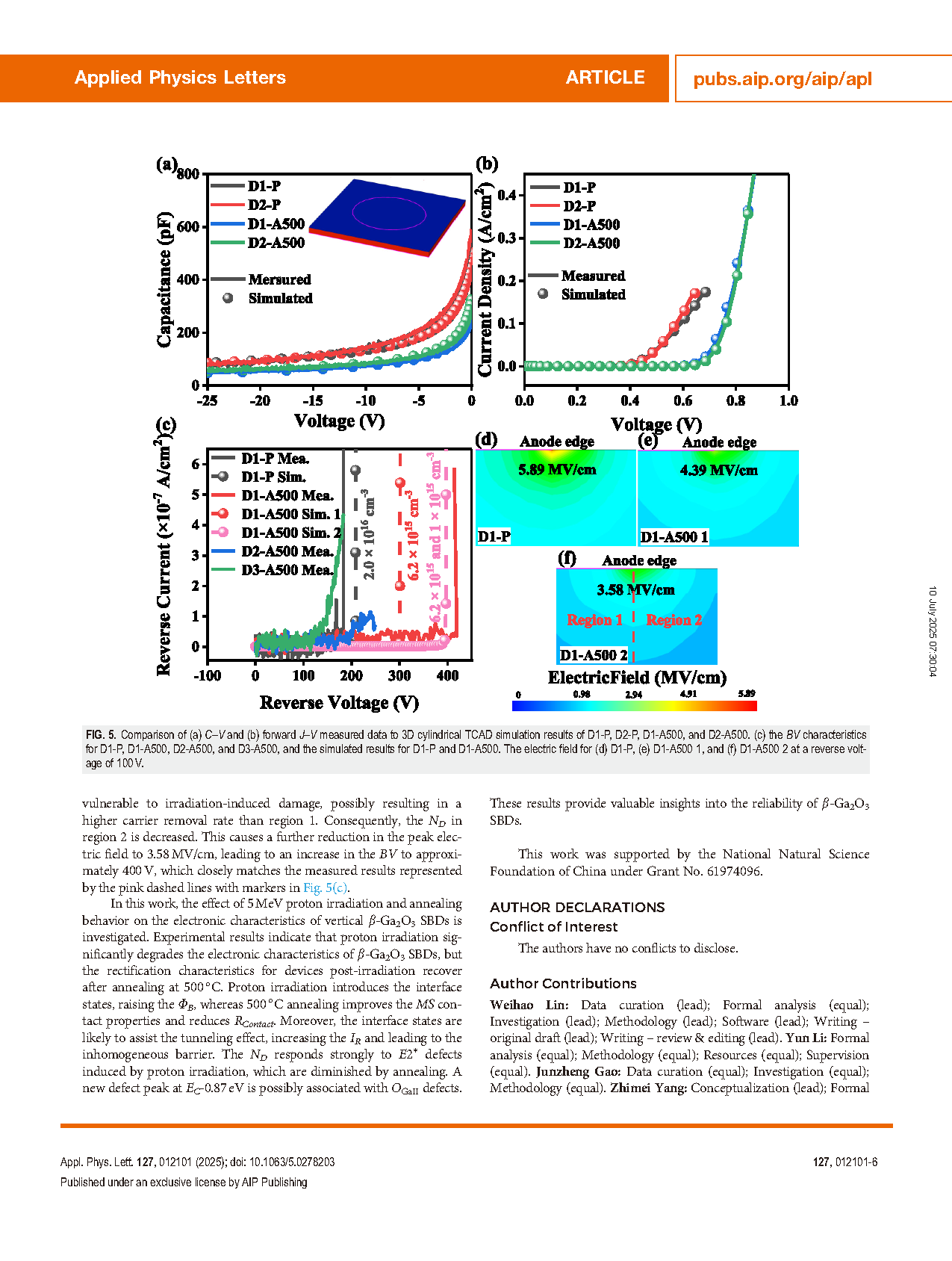

【Member Papers】Synergistic mechanism underlying the enhanced electrical performance of vertical β-Ga₂O₃ Schottky barrier diodes through proton irradiation and annealing
日期:2025-07-31阅读:282
Researchers from the Sichuan University have published a dissertation titled "Synergistic mechanism underlying the enhanced electrical performance of vertical β-Ga2O3 Schottky barrier diodes through proton irradiation and annealing" in Applied Physics Letters.
Project Support
This work was supported by the National Natural Science Foundation of China under Grant No. 61974096.
Background
Beta-gallium oxide (β-Ga2O3) possesses superior properties, including an ultra-wide bandgap (UWBG) of 4.8 to 4.9 eV, a high breakdown electric field of 8 MV/cm, a Baliga merit value of 3444. These features make it a crucial material for the development of various β-Ga2O3-based power devices, such as Schottky barrier diodes (SBDs), junction barrier Schottky diodes (JBSs), metal–oxide– semiconductor field effect transistors (MOSFETs), heterojunction diodes, deep ultraviolet photodetectors, and memristors. In addition, its Ga and O displacement energies, at 25 and 28 eV, respectively are suitable for harsh irradiation environments. In aerospace applications, the integration of β-Ga2O3-based power semiconductor devices into power supplies and systems can significantly enhance efficiency and decrease system size, offering promising prospects in the field of aerospace power electronics in the near future.
Abstract
This study presents the enhancement of the electrical performance in vertical β-Ga2O3 Schottky barrier diodes (SBDs) through proton irradiation followed by annealing processes, along with the underlying physical mechanisms. Initially, the rectification behavior of these SBDs is significantly degraded following 5 MeV proton irradiation. However, for the device treated post annealing, following irradiation (D1-A500), the carrier concentration (ND) decreases by 72.1%, while the breakdown voltage (BV) increases by 124.5%. Deep level transient spectroscopy analysis reveals an increase in the concentration of acceptor traps, E2* (EC-0.74 eV), and the appearance of a new defect peak, E2 (EC-0.86 eV), attributed to proton irradiation and subsequent annealing. E2 is possibly associated with oxygen antisites (OGaII). Further simulations using technology computer aided design further verify that a reduction in ND improves the BV. Therefore, these findings elucidate the effect of proton irradiation on vertical β-Ga2O3 SBDs and emphasize the recovery of the devices by post-annealing treatment, providing valuable insights for application in radiation environments.
Summary
In this work, the effect of 5 MeV proton irradiation and annealing behavior on the electronic characteristics of vertical β-Ga2O3 SBDs is investigated. Experimental results indicate that proton irradiation significantly degrades the electronic characteristics of β-Ga2O3 SBDs, but the rectification characteristics for devices post-irradiation recover after annealing at 500 °C. Proton irradiation introduces the interface states, raising the ΦB, whereas 500 °C annealing improves the MS contact properties and reduces RContact. Moreover, the interface states are likely to assist the tunneling effect, increasing the IR and leading to the inhomogeneous barrier. The ND responds strongly to E2* defects induced by proton irradiation, which are diminished by annealing. A new defect peak at EC-0.87 eV is possibly associated with OGaII defects. These results provide valuable insights into the reliability of β-Ga2O3 SBDs.
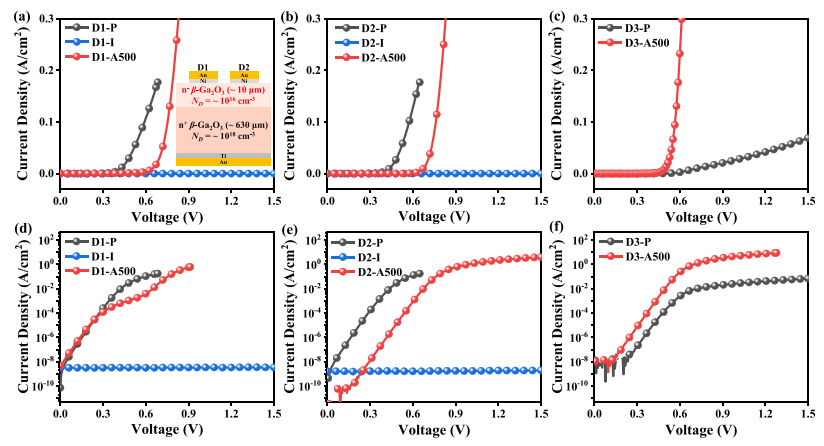
FIG. 1. (a), (b), and (c) The linear and (d), (e), and (f) semi-logarithmic J-V characteristic for D1, D2, and D3, respectively. The inset is the 2D structure schematic of β-Ga2O3 SBDs utilized in this work.
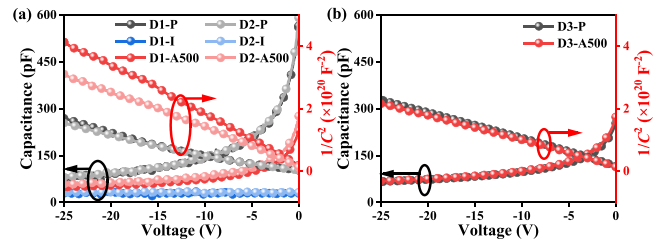
FIG. 2. The C(1/C2)-V characteristics curves at a frequency of 1 MHz for (a) irradiated and (b) unirradiated devices.
DOI:
doi.org/10.1063/5.0278203
